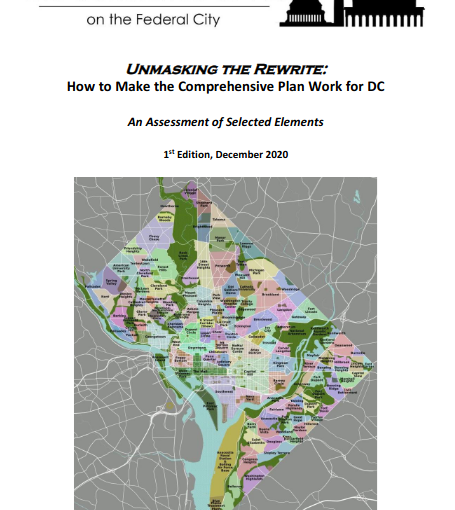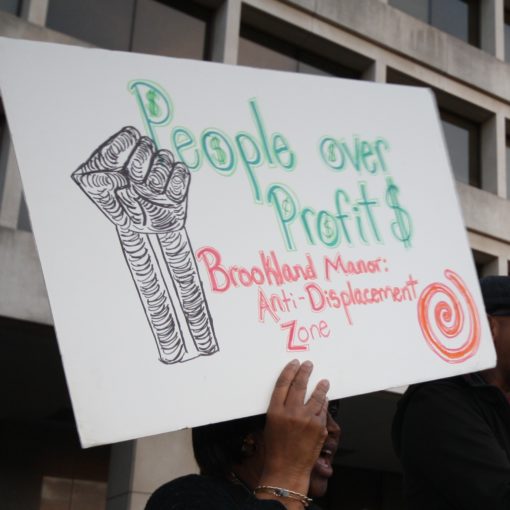Public Resources For The Public Good
Communities, not land owners, should benefit from publicly derived land value increases
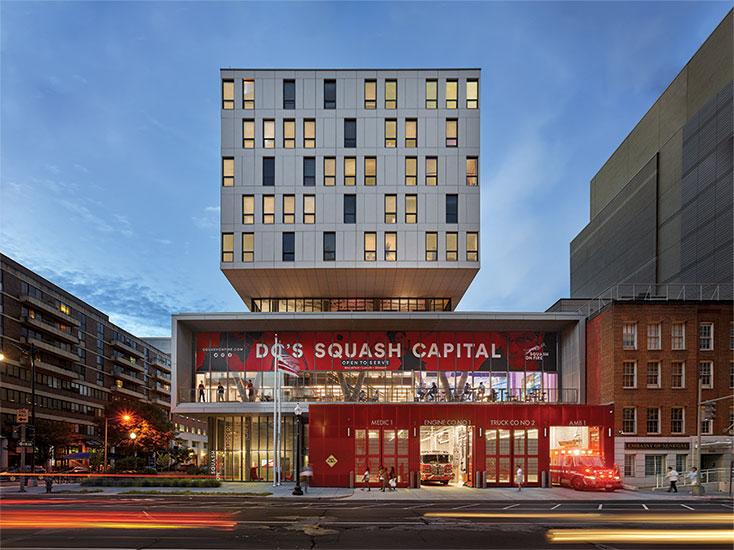 Where it had once envisioned a boutique squash gym , the notorious developer EastBanc finished off its luxe new West End development with a public recreation center. One block away, where the developer had planned to cram in as many luxury two-bedroom apartments as it could possibly fit , it instead installed dozens of deeply affordable four-bedroom units. These features have supplemented, not replaced, the developer’s original plan to provide 52 units of “workforce housing.” Fleeing cramped apartments and decrepit houses filled with mold and roaches, large low-income families have begun to move in. They use their food stamps at the local Trader Joes’ only a few blocks away, and their kids attend some of the best-ranked schools in the District.
Where it had once envisioned a boutique squash gym , the notorious developer EastBanc finished off its luxe new West End development with a public recreation center. One block away, where the developer had planned to cram in as many luxury two-bedroom apartments as it could possibly fit , it instead installed dozens of deeply affordable four-bedroom units. These features have supplemented, not replaced, the developer’s original plan to provide 52 units of “workforce housing.” Fleeing cramped apartments and decrepit houses filled with mold and roaches, large low-income families have begun to move in. They use their food stamps at the local Trader Joes’ only a few blocks away, and their kids attend some of the best-ranked schools in the District.
EastBanc isn’t making a single dollar in profit from these community amenities. But our government demanded them as part of a fair price for the plot of land and the right to build higher and more densely than had previously been allowed. If EastBanc didn’t think it could provide these amenities and still make a profit, its only option was to step away from the deal and lose out on a prime opportunity in a neighborhood with some of the fastest-rising housing prices in the District. The principle of “land value recapture,” applied to this well-heeled neighborhood, has yielded tangible benefits for the whole District.
Of course, this is not what really happened in the West End. In exchange for construction of a new library and fire station, projects with an estimated cost of $20 million , the District handed EastBanc two plots of land worth a combined $30 million (according to the District’s CFO) and enhanced the value of those plots by waiving zoning ordinances limiting height and density.  The Zoning Commission then allowed EastBanc to sidestep ordinances requiring that it include affordable units in both buildings , giving credence to EastBanc’s claims that it was already too burdened by the cost of the library and fire station–despite the millions of dollars in assets that the District had already provided as compensation for these projects. Once again, our government gave away community resources without much clarity on what, exactly, we are getting in exchange.
The Zoning Commission then allowed EastBanc to sidestep ordinances requiring that it include affordable units in both buildings , giving credence to EastBanc’s claims that it was already too burdened by the cost of the library and fire station–despite the millions of dollars in assets that the District had already provided as compensation for these projects. Once again, our government gave away community resources without much clarity on what, exactly, we are getting in exchange.
Were the principle of land value recapture to be fully incorporated into DC law, this kind of deal would become illegal. The phrase “ land value recapture ” is shorthand for the idea that the value added to the land used in a development project through public gifts and special waivers should be recaptured in the form of tangible community benefits. If a developer can make an extra $5 million in profit because the District has allowed it to build four extra stories, that profit-making potential should be considered a public asset, and a substantial, measurable percentage of the extra profit should come back to the people of DC.
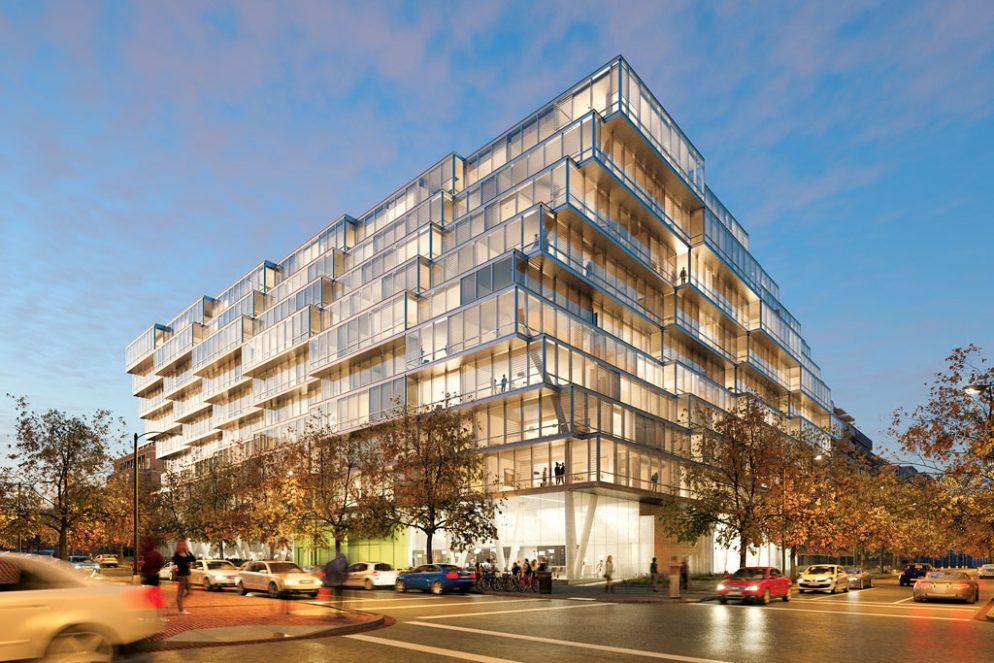 Our vision of an alternate West End deal is an example of a negotiated land value recapture deal. Many development deals hinge on negotiated deals brokered by advisory neighborhood commissions, who may or may not have the capacity to do this negotiation well. As Coalition for Smarter Growth Policy Director Cheryl Cort pointed out in 2012 , speaking generally in reference to the West End deal, there is legitimate “concern that the public land valuation process should be more transparent so we can ensure city residents are getting a good deal.” Much of our city’s capacity to negotiate land deals is instead dedicated to giving value away, on the theory that this will increase tax revenues, and not recapturing land value for public benefit – few CBAs capture value that results from the increase in land value itself, often focusing on just the development process. And yet land values are based on what we all put into the city – our proximity, the existence of public infrastructure, public planning and controls all create value in land – in many cases, the improvements to the land are worth less than the land itself. Why shouldn’t we reap those benefits that we created to begin with?
Our vision of an alternate West End deal is an example of a negotiated land value recapture deal. Many development deals hinge on negotiated deals brokered by advisory neighborhood commissions, who may or may not have the capacity to do this negotiation well. As Coalition for Smarter Growth Policy Director Cheryl Cort pointed out in 2012 , speaking generally in reference to the West End deal, there is legitimate “concern that the public land valuation process should be more transparent so we can ensure city residents are getting a good deal.” Much of our city’s capacity to negotiate land deals is instead dedicated to giving value away, on the theory that this will increase tax revenues, and not recapturing land value for public benefit – few CBAs capture value that results from the increase in land value itself, often focusing on just the development process. And yet land values are based on what we all put into the city – our proximity, the existence of public infrastructure, public planning and controls all create value in land – in many cases, the improvements to the land are worth less than the land itself. Why shouldn’t we reap those benefits that we created to begin with?
A second way land value recapture can be done is through a plan- based approach. In this approach, community benefits are tied to specific increases in the intensity of development for a particular area. These benefits are specified prior to the adoption of a plan, creating certainty for developers and the community about what benefits will be provided and what their cost will be. Economic analyses can be performed that establish the value of land before and after zoning changes are made, with mechanics put in place to recapture the land value enhancement. By doing this, the enhanced value of the land is made to benefit the community and not become a windfall profit for landowners who did comparatively little to create that value, while not putting the full burden of the benefit provision on the developer, who may not be able to make a deal work out otherwise. To quote Nico Calavita, a professor of city planning, in a paper on this technique of land value recapture:
With up-zoning, the possible revenues—due to the ability to construct additional housing units or additional square feet of office space—go up and with them the value of the land and what a developer can pay for land, assuming that the developer can receive higher sales prices and rents in such a location. A system of community benefits and affordable housing requirements will increase development costs and lower the price the developer can pay for the land. The landowner, in turn, will not be able to raise the price of the land as much as would be possible if the density were simply increased without any community benefit requirements. In the long run, the land market will adjust to the additional regulatory costs. Instead of a windfall to landowners, they get a lesser profit and the community shares some of the benefits.
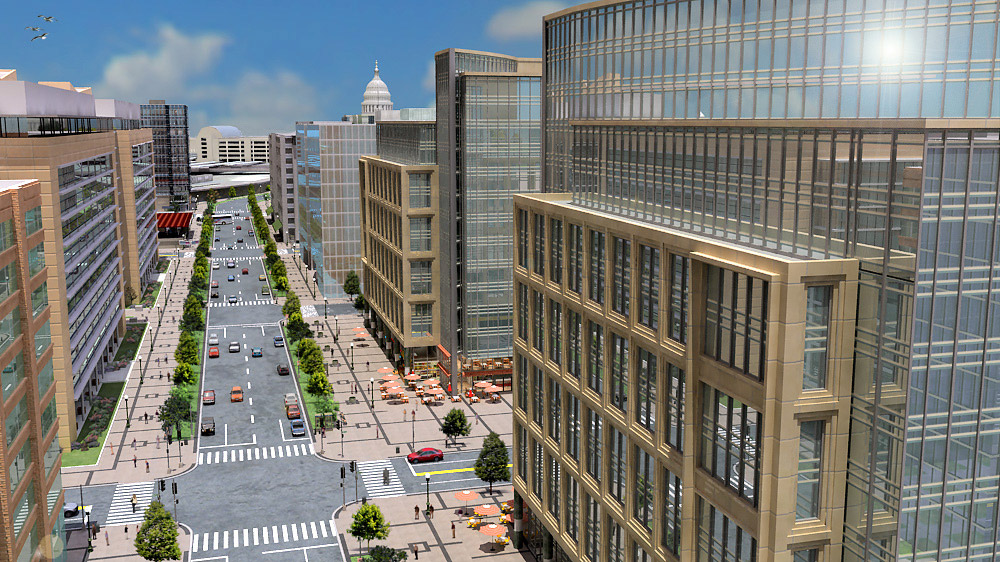 An example of where this would have made a difference is in NoMA, where according to Greater Greater Washington founder David Alpert, “ DC created a lot of value when it upzoned the land. But that value all went instantly into the pockets of the current owners of the land”. The city was forced to allocate $25 million just in land acquisition costs in an area where land had previously been cheap and even publicly owned before the rezoning. And it wasn’t just the fact that the city mismanaged the plan – like what really happened in the West End EastBanc deal, where private recreation and exclusive condos were the order of the day, many buildings in the NoMA area are going up with private recreation such as rooftop pools. A plan based land value recapture scheme for NoMA could have planned for a new public pool facility accessible to everyone in the neighborhood, and put the money saved from rooftop pool construction into affordable housing in those buildings.
An example of where this would have made a difference is in NoMA, where according to Greater Greater Washington founder David Alpert, “ DC created a lot of value when it upzoned the land. But that value all went instantly into the pockets of the current owners of the land”. The city was forced to allocate $25 million just in land acquisition costs in an area where land had previously been cheap and even publicly owned before the rezoning. And it wasn’t just the fact that the city mismanaged the plan – like what really happened in the West End EastBanc deal, where private recreation and exclusive condos were the order of the day, many buildings in the NoMA area are going up with private recreation such as rooftop pools. A plan based land value recapture scheme for NoMA could have planned for a new public pool facility accessible to everyone in the neighborhood, and put the money saved from rooftop pool construction into affordable housing in those buildings.
 Incorporating land value recapture principles into our city’s plans to upzone and increase development in the coming years will ensure that increases in land values don’t have unintended consequences on low and moderate income people living in affected areas. We can have more equitable, compact development if we ensure that those who profit from public actions also provide public benefits.
Incorporating land value recapture principles into our city’s plans to upzone and increase development in the coming years will ensure that increases in land values don’t have unintended consequences on low and moderate income people living in affected areas. We can have more equitable, compact development if we ensure that those who profit from public actions also provide public benefits.



